
|
Astronomy Picture Of the Day (APOD)
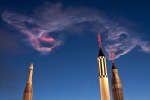 Discovery s Dawn
Discovery s Dawn
9.04.2010
On April 5, visitors to Kennedy Space Center saw these colorful clouds, twisting and drifting through dawn skies. Of course, the clouds were rocket engine plumes from the predawn launch of the space shuttle Discovery on the STS-131 mission to the International Space Station.
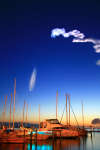 Discovery s Cloud
Discovery s Cloud
8.04.2010
The space shuttle orbiter Discovery is now docked with the International Space Station, some 350 kilometers above planet Earth. Last Monday, its launch to orbit was a beautiful one as it rose into clear, predawn skies at 6:21am EDT from Kennedy Space Center's pad 39A.
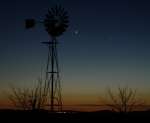 Venus and Mercury in the West
Venus and Mercury in the West
7.04.2010
In this twilight skyview, a windmill stands in silent witness to a lovely pairing of planets in the west. The picture was recorded on April 5 from Gallegos del Campo, Zamora, Spain. Venus (left) and Mercury (right) are near their much anticpated conjunction in the early evening sky.
 A Fox Fur, a Unicorn, and a Christmas Tree
A Fox Fur, a Unicorn, and a Christmas Tree
6.04.2010
What do the following things have in common: a cone, the fur of a fox, and a Christmas tree? Answer: they all occur in the constellation of the unicorn (Monoceros). Pictured above...
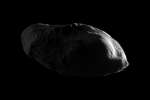 Prometheus Remastered
Prometheus Remastered
5.04.2010
What does Saturn's shepherd moon Prometheus really look like? The raw images from the robotic Cassini spacecraft's January flyby of the small moon showed tantalizing clues on grainy images, but now that the Cassini team has digitally remastered these images, many more details have come out.
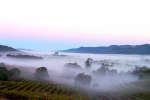 The Belt of Venus over the Valley of the Moon
The Belt of Venus over the Valley of the Moon
4.04.2010
Although you've surely seen it, you might not have noticed it. During a cloudless twilight, just before sunrise or after sunset, part of the atmosphere above the horizon appears slightly off-color, slightly pink.
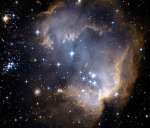 NGC 602 and Beyond
NGC 602 and Beyond
3.04.2010
Near the outskirts of the Small Magellanic Cloud, a satellite galaxy some 200 thousand light-years distant, lies 5 million year young star cluster NGC 602. Surrounded by natal gas and dust, NGC 602 is featured in this stunning Hubble image of the region.
 Serene Paraselene
Serene Paraselene
2.04.2010
Nestled in the Austrian Alps, frozen Lake Ossiach stretches across the foreground of this serene view. Recorded on March 1, the night sky includes a nearly full Moon and bright planet Saturn seen through thin clouds near picture center. It also includes a remarkably bright and colorful moondog or paraselene at the left.
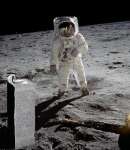 Evidence Mounts for Water on the Moon
Evidence Mounts for Water on the Moon
1.04.2010
In 2009, space missions revealed tantalizing signs of water on or near the lunar surface, once thought of as a dry and desolate environment. But researchers are now offering this archival picture as further evidence that humans might one day be able to use the Moon's newly discovered resource to directly quench their thirst.
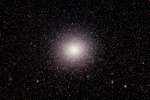 Millions of Stars in Omega Centauri
Millions of Stars in Omega Centauri
31.03.2010
Featured in the sharp telescopic image, globular star cluster Omega Centauri (NGC 5139) is some 15,000 light-years away and 150 light-years in diameter. Packed with about 10 million stars much older than...
|
January February March April May June July August September October November December |
||||||||||||||||||||||||||||||||||||||||||||||||||||||||